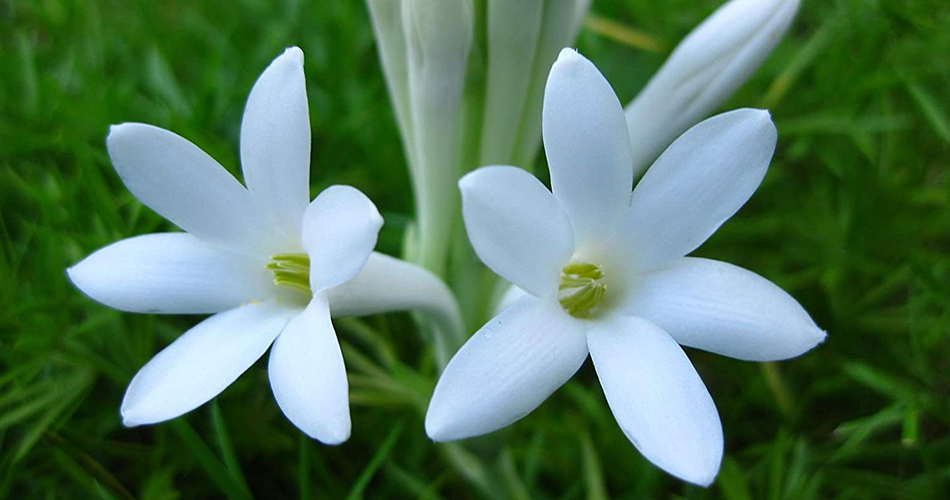Tuberose is a garden plant (Polianthes tuberosa) of the Amaryllis family (Amaryllidaceae). It is native to Mexico but has never been found growing wild. The plant grows to about three feet tall. The blossoms are funnel-shaped and waxy white in color. They are noted for their extremely sweet fragrance. The leaves are long and slender. The tuberose was so named because it forms a thick, bulb-like underground stem called a tuber. New plants develop from these tubers. They are planted in spring when all danger of frost has passed. The new plants bloom in late summer. In the fall they are dug up and stored in a cool, dry place. The most popular varieties of tuberoses are the Mexican Single, Dwarf, and Pearl Excelsior. The tuberose is named for its tube-shaped rootstock, from which slender stems grow. Tuberose blossoms have a heavy, sweet fragrance. The flowers are used in making perfumes. Also they are raised for use in perfumes and toilet preparations in central Europe, southern Africa, and in North Carolina and New Jersey. In addition, it is grown in Hawaii for use in making wreaths of flowers strung together. The tuberose has a heavy, almost sickening, odor. Its slender stem springs from a tube like rootstock, and often grows 3 feet (91 centimeters) high. The stem of the tuberose bears waxy-white blossoms and has eight sword-shaped leaves. The tuberose is named for the shape of its rootstock, not for its resemblance to a tube shaped rose. The tuberose is not a rose. Scientific classification: The tuberose belongs to the agave family, Agavaceae. It is Polianthes tuberosa.


Be First to Comment